How IoT Integration Transforms HVAC Operations
The landscape of climate management is undergoing a profound shift with the advent of intelligent connectivity. By leveraging the power of connected devices, businesses and homeowners alike are prioritizing efficiency and comfort in their environments.
The ability to monitor and control temperature settings remotely leads to significant energy savings, as these innovations allow for more precise adjustments based on real-time data. This shift not only enhances user experience but also contributes to a more sustainable future.
Moreover, system automation plays a crucial role in streamlining operations, as automated solutions can respond to changing conditions without the need for constant human intervention. This evolution represents a pivotal movement towards smarter, more efficient ways to manage indoor climates.
Real-Time Monitoring and Predictive Maintenance for Climate Control Systems
In the realm of climate control management, real-time monitoring has become an essential component, allowing for proactive oversight and optimization.
- Connected devices facilitate continuous tracking of system performance, ensuring that all components operate efficiently.
- The implementation of system automation enables automatic adjustments based on real-time data, promoting energy savings and enhancing comfort levels.
- Through advanced analytics, potential failures can be predicted, allowing for timely maintenance actions to be scheduled, thus reducing unexpected downtimes.
As data is collected from various sensors, maintenance teams can receive insights that guide them in making informed decisions:
- Identifying patterns of wear and tear within the machinery.
- Determining optimal replacement schedules for parts.
- Enhancing energy efficiency by identifying inefficiencies in the system.
This level of insight not only contributes to enhanced performance but also drives significant cost reductions through minimized interruptions and extended equipment longevity.
Ultimately, embracing these advanced functionalities not only streamlines operations but also fosters a sustainable approach to energy management, redefining how facilities maintain their environments.
Energy Consumption Optimization through Smart IoT Sensors
The implementation of intelligent sensors within climate control systems plays a vital role in achieving significant energy savings. By utilizing connected devices, operators can continuously gather data regarding temperature, humidity, and occupancy patterns. This data enables real-time adjustments to be made, ensuring that energy is used efficiently based on actual needs rather than pre-set schedules.
Remote monitoring solutions empower facility managers to oversee multiple locations simultaneously, resulting in a more streamlined approach to energy consumption. These sensors can identify trends and anomalies, allowing for proactive measures to be taken before issues escalate, which not only reduces waste but also contributes to lower utility costs.
Moreover, the capacity to customize settings according to real-time environmental conditions allows for optimized performance. By leveraging the insights derived from smart sensors, stakeholders can maximize operational efficiency, leading to enhanced sustainability and considerable reductions in energy expenditure.
Enhancing User Comfort with Automated Climate Control Solutions
The incorporation of intelligent technology within climate systems leads to remarkable improvement in user comfort. By utilizing connected devices, homeowners can enjoy a tailored environment that fits their specific needs and preferences. Automated climate control allows for adjustments based on real-time data, ensuring that the temperature remains within the desired range effortlessly.
Moreover, these advanced setups can predict user behavior and adjust settings accordingly, fostering a more pleasant atmosphere without requiring constant manual intervention. This level of system automation not only enhances comfort but also contributes to overall energy savings, as the systems operate more efficiently and according to actual demand rather than fixed schedules.
As consumers become more aware of their energy consumption, the ability to optimize climate control has become paramount. The seamless interaction between appliances and connected devices empowers users to create an ideal living environment while benefiting from reduced utility costs. For more information on energy-efficient solutions, visit https://mdairheatingandcooling.com.

